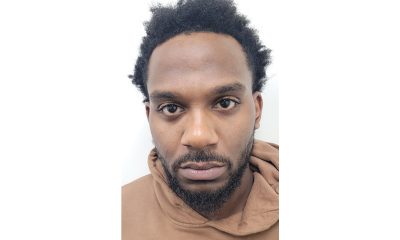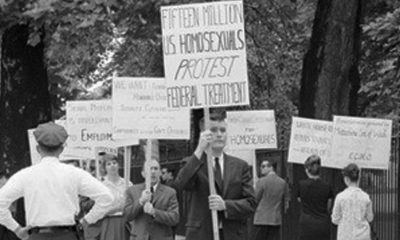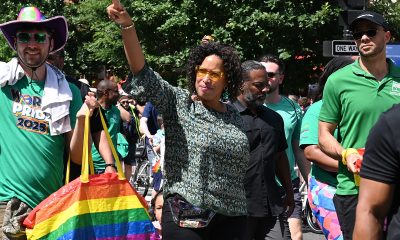Local
Three teens charged in gay D.C. principal’s murder
Police say victim met killers through sex chat line

Four people were arrested this week in connection with the murder of Brian Betts, the gay principal of Shaw Middle School in D.C. (Photo by Bel Perez Gabilondo; courtesy of D.C. Public Schools)
Three 18-year-old men who allegedly met gay D.C. middle school principal Brian Betts through a telephone sex chat line were arrested this week in connection with his shooting death, police said.
Alante Saunders, whom Montgomery County Police said had no fixed address, and Sharif Tau Lancaster, who lives along the 5300 block of Fifth Street, N.W., in D.C., were charged Monday with first-degree murder, armed robbery and the use of a handgun in a felony crime of violence.
Deonatra Q. Gray, who lives along the 1300 block of Southview Drive in Oxon Hill, Md., was charged Tuesday with first-degree murder, one count of armed robbery, and one count of conspiracy to commit armed robbery.
“While the motive of the crime is still being investigated, we believe that it is most likely going to be robbery,” said Montgomery County Police Chief J. Thomas Manger during a news conference Monday.
Betts, 42, was found shot to death April 15 in a second floor bedroom of his house in Silver Spring, Md. Police said they found his fully clothed body after colleagues at D.C.’s Shaw Middle School, where he worked as principal, became concerned when Betts failed to report to work.
On the day they discovered Betts’ body, investigators disclosed they found no signs of a forced entry into Betts’ house, leading them to believe he invited his killer or killers inside.
Also charged in the case was Artura Otey Williams, 46, Lancaster’s mother. Police she was arrested Monday at the home on Fifth Street, N.W., on charges related to her alleged use of one of several credit cards taken from Betts’ house. She was not charged with the murder itself.
In a related development, D.C. Attorney General Peter Nickles separately disclosed Monday that Lancaster and Sanders had recently escaped from a juvenile home where they were in custody by the city’s Department of Youth Rehabilitation Services. Nickles did not say the criminal offense or offenses the two youths had been charged with to land them in DYRS custody.
Manger, when asked by a reporter at the Montgomery County Police news conference whether the chat line through which Betts allegedly met his killers catered solely to gay clientele, said, “I’m not aware of that. I don’t know.”
He said he also didn’t know the name of the chat line, saying only, “It’s been described as a sex chat line, a social networking chat line.” But he noted that investigators believe Betts met one or all of the three 18-year-old men implicated in the case through the chat line on the night he was murdered.
After the news conference, police spokesperson Capt. Paul Sparks described the system as a “national chat line” linked to an Internet site. Sparks said he didn’t know the name of the chat line or Internet site.
Many gay-oriented sex chat lines are advertised in local and national gay publications and web sites.
Manger’s news conference outside Montgomery County Police headquarters in Rockville came the same day that teams of police officers and detectives in Montgomery County, Prince George’s County and D.C. used search warrants to conduct early-morning raids on four residences where they believed evidence and suspects in the case were located.
Manger said Williams was arrested during a search of her house on the 5300 block of Fifth Street, N.W.
He said Saunders, Lancaster and the third 18-year-old man were taken into custody during the search of an apartment along the 1300 block of Southview Drive in Oxon Hill, Md., which is located in Prince George’s County.
Among the items found during the Southview Drive search was Betts’ wallet, which was in possession of one of the men implicated in the case, Manger said. He noted that police found a receipt in the wallet for a pair of Nike shoes that were purchased using one of Betts’ credit cards shortly after the murder.
Police also used warrants Monday to search residences along the 4300 block of Third Street, S.E., in D.C., and along the 2400 block of Southern Avenue in Temple Hills, Md., in Prince George’s County.
Neighbors reported seeing police remove items from the residences, including several large bags containing items from the home on Fifth Street, N.W., which is near the border of D.C. and Silver Spring.
According to Manger and statements released Monday by Montgomery County Police, investigators began piecing together evidence linking the murder to the arrested suspects less than a week after Betts’ body was discovered.
The first break came when investigators discovered that Williams had used one of several credit cards stolen from Betts’ house on the night of the murder to purchase $111 worth of groceries from a Giant supermarket in Silver Spring on April 16, the day after Betts’ body was found. The Giant is located less than two miles from Betts’ house. Police said Williams was recorded using the credit card on a video surveillance camera at the store.
Police charged her with two counts of knowingly receiving a stolen credit card with the intent to use it, attempted theft of items less than $1,000 in value, and attempted fraudulent credit card use. She was being held in D.C. while awaiting extradition to Montgomery County.
“Lancaster was identified through fingerprints obtained from the crime scene inside Betts’ residence,” says one of two statements released Monday by Montgomery County Police.
“Through the course of the investigation, it was confirmed that Lancaster has no known ties to Betts,” says the statements. “Saunders, also with no known ties to the victim, was identified through fingerprints obtained inside and outside the vehicle belonging to Betts, a 2007 Nissan Xterra, which was stolen from his residence on the night of the murder.”
D.C. police recovered the vehicle April 17, two days after Betts was found dead in his house along the 3900 block of Fourth Street, S.E.
“It was determined that several credit cards belonging to Betts were stolen from the residence,” one of the police statements says. “The continuing investigation revealed that Betts’ credit cards were used to make purchases throughout the area, including Silver Spring, Oxon Hill, Hyattsville, Northwest and Southeast Washington, D.C.”
The statement notes that surveillance photos show Lancaster, Saunders and Williams using the credit cards.
“This remains still a very active investigation,” Manger said during his news conference.
In response to reporters’ questions, he said he didn’t know whether Lancaster, Saunders and Gray used the chat line to rob or harm other people. He also told reporters that he didn’t know what promoted one of the suspects to allegedly shoot Betts to death if the motive was robbery.
“The interviews have not been completed, so we don’t have that information,” he said.
Sparks, the police spokesperson, said more arrests could be made in the case.
Officials with the D.C. group Gays & Lesbians Opposing Violence have said that law enforcement agencies in the D.C. area should issue a public alert about criminals targeting gays for robberies and assaults through online social networking sites or phone chat lines.
GLOV co-chairs Kelly Pickard and Joe Montoni said during the group’s regular monthly meeting in April, one week after the Betts murder, that plans were made to distribute flyers and other alerts urging members of the LGBT community to exert caution when using such sites or chat lines.
On Dec. 27, gay D.C. resident Anthony Perkins, 29, was shot to death in his car in Southeast D.C. by a suspect who met him through a phone chat line, according to D.C. police and the U.S. Attorney’s office. Authorities have so far declined to name the chat line.
D.C. police charged 20-year-old Antwan Holcomb with first-degree murder while armed in connection with Perkins’ death.
And in January, gay Maryland resident Gordon Rivers, 47, was fatally shot inside his car while it was parked on Naylor Road in Southeast D.C. Police later arrested 17-year-old William Wren of Southeast D.C. and 22-year-old Anthony Hager of Temple Hills, Md., on murder charges in connection with the case.
D.C. police said in an arrest affidavit that Wren admitted knowing Rivers before the murder and having called Rivers by phone to arrange a meeting with him on Naylor Road, intending to rob him.
Police and the U.S. Attorney’s office have declined to disclose how Wren met Rivers, spurring questions as to whether the two met online or through a phone chat line.
Maryland
FreeState Justice launches 501(c)(4) group
FreeState Equality will focus on policy and advocacy
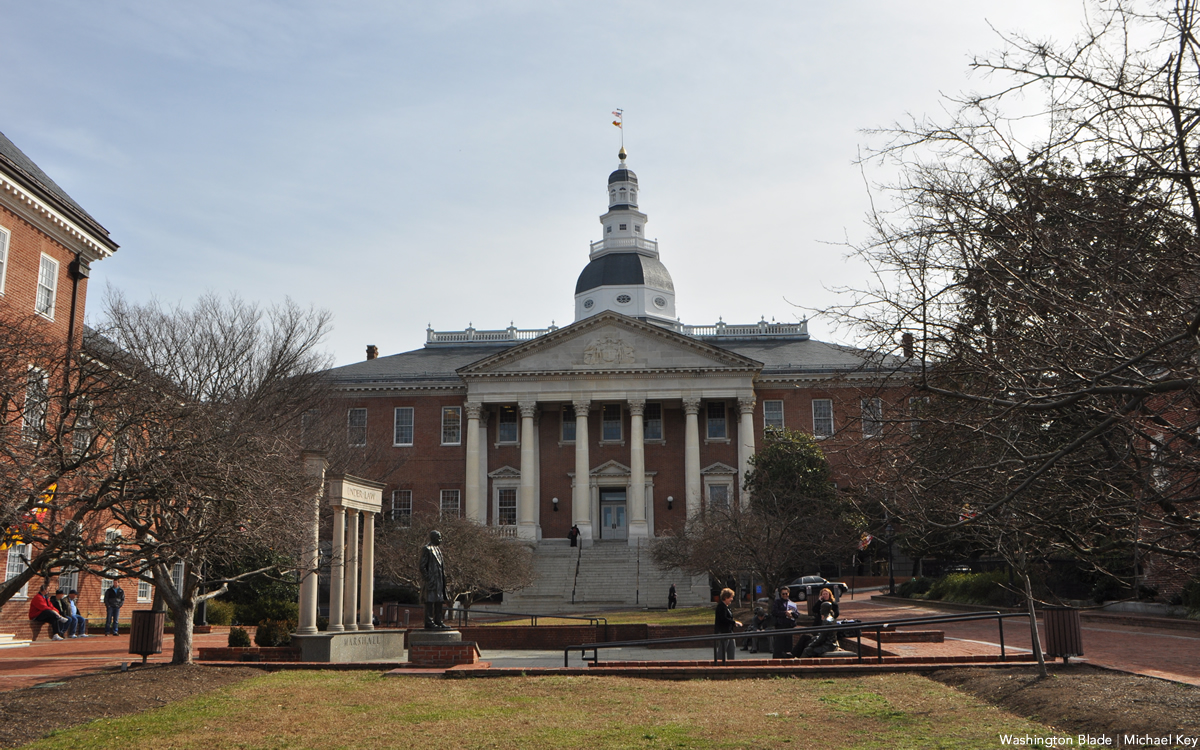
FreeState Justice, an LGBTQ organization that provides legal services, community programs, and public education in Maryland, announced the launch of FreeState Equality on Wednesday.
The new, independent organization intends to pursue advocacy and policy work beyond the legal capability of FreeState Justice, a 501(c)(3) non-profit. FreeState Equality functions as a 501(c)(4) organization, meaning it can partake in political activity.
“We are committed to transparency throughout this process and look forward to continuing our work together in service of LGBTQ+ Marylanders,” said FreeState Justice Executive Director Phillip Westry.
FreeState Equality will take on policy, advocacy, and civic engagement initiatives while FreeState Justice will pursue legal and direct-service work, according to Westry.
While both organizations adhere to similar values, they will feature separate leadership, operations and compliance.
FreeState Equality is hosting its first launch fundraiser on Dec. 10 at the Brass Tap in Baltimore. The event, held from 5-7 p.m., will feature insight from FreeState Equality staff about how Maryland policy can support the state’s LGBTQ community.
Attendees can purchase fundraiser tickets on Zeffy for $25 general admission, which includes a free first drink. The organization also welcomes additional donations.

By LEE O. SANDERLIN, PAMELA WOOD and BRENDA WINTRODE | Maryland House of Delegates Speaker Adrienne A. Jones, the first woman and first person of color to hold her position, stepped down from her leadership post Thursday, effective immediately.
Jones, 71, has been a member of the legislature since 1997 and ascended to the top role in 2019 following the death of longtime House Speaker Michael E. Busch.
Jones held a meeting with top House Democratic leaders Thursday afternoon, sources said, at which she informed them of her decision. In a statement, Jones described the changes of life’s seasons and said she was ready to focus on what lies ahead.
The rest of this article can be found on the Baltimore Banner’s website.
District of Columbia
Activists praise Mayor Bowser’s impact on city, LGBTQ community
‘She made sure LGBTQ residents knew they were seen, valued, loved’

Members of D.C.’s LGBTQ community offered their thoughts on the impact Mayor Muriel Bowser has had on them, the city, and LGBTQ people in statements and interviews with the Washington Blade in the week following Bowser’s announcement that she will not run for re-election in 2026.
Bowser’s Nov. 25 announcement came during the third year of her third four-year term in office as mayor and after she served as a member of the D.C. Council representing Ward 4 from 2007 to Jan. 2, 2015, when she took office as mayor.
The LGBTQ activists and mayoral staffers who spoke to the Blade agreed that Bowser has been an outspoken and dedicated supporter on a wide range of LGBTQ-related issues starting from her time as a Council member and throughout her years as mayor.
Among them is one of the mayor’s numerous openly LGBTQ staff members, Jim Slattery, who has served in the Cabinet-level position as the Mayor’s Correspondence Officer since Bowser first became mayor.
“As Mayor Muriel Bowser’s longest serving LGBTQIA+ staffer – dating back to her first term as the Ward 4 Council member – and a proud member of her Cabinet since day one of her administration, I have had the opportunity to witness her at work for the people she serves and leads,” Slattery said in a statement. “Noteworthy is that throughout the entirety of my 27 years in District government, I have always been able to do so as an out and proud gay man,” he stated.
Slattery added that he has witnessed first-hand Bowser’s “absolute belief” in supporting the LGBTQ community.
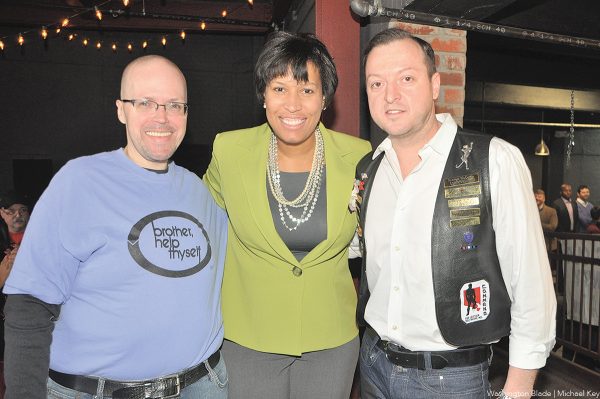
“She has led on HIV/AIDS prevention and treatment, on shelter for vulnerable members of our community, housing for older members of the community, and has been a reliable and constant presence at events to LGBTQIA+ residents,” Slattery said. Among those events, he said, have been World AIDS Day, the D.C. Pride Parade, the 17th Street LGBTQ High Heel Race, and WorldPride 2025, which D.C. hosted with strong support from the mayor’s office.
Ryan Bos, CEO & president of Capital Pride Alliance, the D.C. group that organizes the city’s annual LGBTQ Pride events and served as lead organizer of WorldPride 2025, praised Bowser for being a longtime supporter of that organization.
“She played a very supportive role in helping us as an organization grow and to be able to bring WorldPride to Washington, D.C.,” Bos told the Blade. “And we commend her years of service, And our hope is that she helps us to continue to advocate for the support from the D.C. government of the LGBTQ+ community, especially during these times,” Bos said.
Bos, who was referring to the Trump administration’s hostility toward LGBTQ issues and sharp cutbacks in federal funds for nonprofit organizations, including LGBTQ organizations, said Capital Pride Alliance appreciated Bowser’s efforts to provide city funding for events like WorldPride.
“She provided support through the event process of WorldPride and ultimately along with the D.C. Council provided necessary funding to ensure WorldPride was a success,” Bos said. “And we are proud that we are able to show that Capital Pride and WorldPride had such a large economic impact for D.C. and the D.C. government,” he added.
Marvin Bowser, Mayor Bowser’s gay brother who operates a local photography business and has been active in the D.C. LGBTQ community for many years, said he has also witnessed first-hand his sister’s support for the LGBTQ community and all D.C. residents since the time she became a Council member and even before that.
Among his vivid memories, he said, was his sister’s strong support for the marriage equality law legalizing same-sex marriage in D.C. that the Council approved in 2009 under then-Mayor Adrian Fenty.
“I remember the first time she was standing up and giving clear and unequivocal support to the community when that law passed,” Marvin Bowser told the Blade. “And she was front and center in speaking very strongly in support of marriage equality,” he said.
Marvin Bowser also credits his sister with expanding and strengthening the then-Mayor’s Office of GLBT Affairs, among other things, by appointing advocate Sheila Alexander Reid as the office’s director in 2015.
Reid, who for many years prior to becoming director of the GLBT Affairs office was founder and publisher of the national lesbian publication Women In The Life, had the reputation of a “rock star,” according to Marvin Bowser.
He recalls that Mayor Bowser also played a lead role in D.C.’s bid to host to the quadrennial international LGBTQ sports competition Gay Games for 2022.
D.C lost its bid for the 2022 Gay Games after the Federation of Gay Games selected Hong Kong to host the event in an action that Marvin Bowser says was unfair and based on the effort to hold the Gay Games for the first time in Asia even though D.C. had a stronger bid for carrying out the event.
“Everything she’s done for the community has been very visible and from the heart,” he said of Muriel Bowser. “And in my personal relationship with her, she has also been nothing but absolutely supportive of me and my partner over the years,” he said.
“And we were just at her house helping her put up Christmas decorations,” he added. “And so, it’s been wonderful having her as a sister.”
Veteran D.C. LGBTQ advocate Japer Bowles, who serves as the current director of the Mayor’s Office of LGBTQ Affairs, discussed the mayor’s record on LGBTQ issues in his own statement to the Blade.
“Mayor Muriel Bowser has been an unwavering champion for D.C.’s lesbian, gay, bisexual, transgender, queer, intersex, and asexual community and movement,” he said. “Her more than 20 years of leadership brought consistent and historic investments for our LGBTQIA+ youth, seniors, veterans, and residents experiencing homelessness as well as impactful violence-prevention initiatives,” he added.
“Under her leadership, the Mayor’s Office of LGBTQ Affairs grew into a national leader, delivering more than $10 million in community grants for LGBTQIA+ programs and managing 110 Housing Choice vouchers,” Bowles said in his statement.
“Because of her work, we are stronger, safer, more visible, and, proudly, ‘the gayest city in the world,’” he said in quoting Bowser’s often stated comment at LGBTQ events about D.C. being the world’s gayest city.
In a statement that might surprise some in the LGBTQ community, gay D.C. small business owner Salah Czapary, who served from 2022 to 2024 as director of the Mayor’s Office of Nightlife and Culture as a Bowser appointee, criticized some of the city’s non-LGBTQ related polices under the Bowser administration as being harmful to small businesses.
Bowser appointed Czapary, a former D.C. police officer, to the nightlife office position shortly after he lost his race as an openly gay candidate for the Ward 1 D.C. Council seat held by incumbent Brianne Nadeau.
“Mayor Bowser led D.C. through turbulent years and major growth, and we can all be proud of her leadership on many fronts,” Czapary said in a statement to the Blade. “She is also setting an example that more leaders should follow by stepping aside to allow a new generation to lead,” he said. “But as we turn the page, we must be honest about what the next mayor should deliver,” he says in his statement.
Without mentioning Bowser by name, he went on to list at least four things the next mayor should do that implied that Bowser did not do or did wrong. Among them were treating the D.C. Council as a “true governing partner,” not letting residents and small businesses “feel the weight of outdated, slow, and unresponsive systems,” and the need for leadership that “values competence over loyalty.”
He added that a “reversal” by the city of the city’s streetery program that was put in place during the COVID pandemic to allow restaurants to install outdoor seating into street parking lanes, was a “roll it back” on progress for small businesses.
He concluded by stating, “LGBTQ rights and inclusion are among the many fronts on which we can be very proud of the mayor’s leadership.”
The mayor’s office did not immediately respond to an offer by the Blade to give the office an opportunity to respond to Czapary’s statement.
A significantly different perspective was given by Sheila Alexander Reid, who said she was proud to serve as director of the Mayor’s LGBTQ Affairs Office during the first six-and-a-half years of Bowser’s tenure as mayor.
“I watched her evolve from a newly elected mayor finding her footing into a confident, seasoned leader who met every challenge head-on and time after time slayed the competition,” Alexander Reid said in a statement to the Blade.
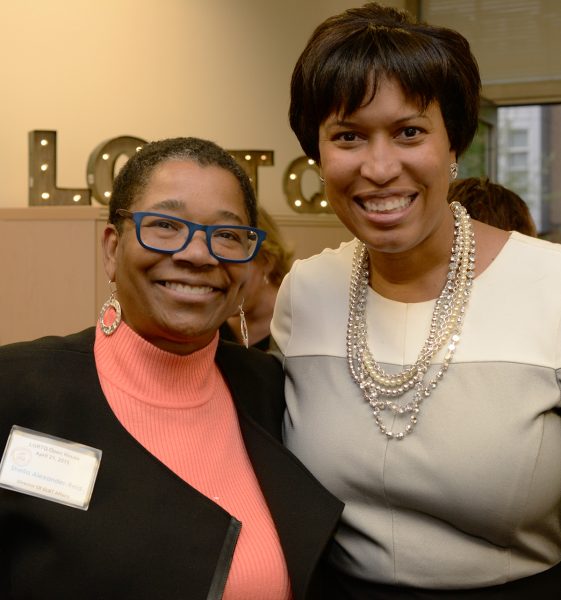
“With each year in office, her voice grew stronger, more grounded, and more fearless,” her statement continues. “And she needed that strength, because being a Black woman mayor is not for the faint of heart, But Mayor Bowser never backed down. Instead, she showed the city what courageous, compassionate leadership truly looks like.”
Alexander Reid added that Bowser funded a new LGBTQ Community Center facility, expanded a workforce development program for the transgender community, and “made D.C. the first jurisdiction in the nation to require LGBTQ+ cultural competency training for healthcare providers.”
She also pointed to the mayor’s LGBTQ “safety nets” through low-barrier shelters and housing vouchers and her support for LGBTQ celebrations like the 17th Street High Heel Race.
“But what inspired me most was this,” Alexander Reid stated. “At a time when some elected officials across the country were retreating from LGBTQ support, Mayor Bowser was doing the opposite. She leaned in, she doubled down. She made sure LGBTQ residents knew they were seen, valued, protected, and loved by their city.”
-

 The White House4 days ago
The White House4 days ago‘Lavender Scare 2.0’: inside the White House’s campaign against LGBTQ federal employees
-

 a&e features3 days ago
a&e features3 days agoMeet Mr. Christmas
-

 District of Columbia4 days ago
District of Columbia4 days agoActivists praise Mayor Bowser’s impact on city, LGBTQ community
-

 Japan5 days ago
Japan5 days agoTokyo court upholds Japan’s same-sex marriage ban



